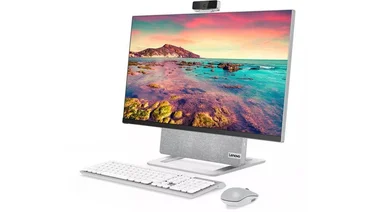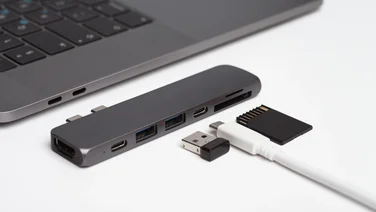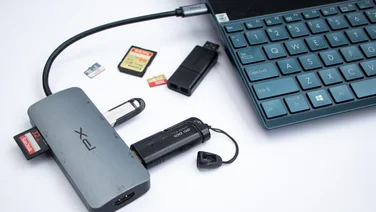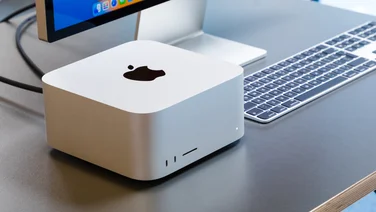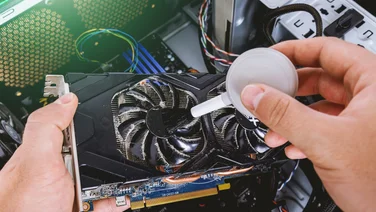To help us provide you with free impartial advice, we may earn a commission if you buy through links on our site. Learn more
- How to choose the right RAM for your PC
- The best DDR4 memory to buy in 2020
- 1. Corsair Vengeance LPX 2x8GB 2,666MHz: Best budget RAM
- 2. HyperX Fury 2x8GB 3,200MHz: Best mid-range RAM
- 3. Corsair Vengeance LPX 2x8GB 2,666MHz: Best value RAM
- 4. Adata XPG Spectrix D60G 2x8GB 3,000MHz: Best RGB RAM
- 5. Crucial Ballistix Elite 4,000MHz: Best high-performance RAM

RAM isn’t the most exciting upgrade for your PC, but getting the right type – and enough of it – is essential if you want your system running at its maximum speed. Here’s our guide to choosing the right DDR4 modules, along with our selection of the best memory kits to suit a range of budgets.
How to choose the right RAM for your PC
You might imagine that computer memory is all much of a muchness, but in fact there’s a range of different memory types, speeds and timings to choose from – and that’s before we look at any extra features. Unless you’re pushing the limits of PC overclocking, however, there are only a handful of factors you really need to worry about.
For a start, all modern CPUs and motherboards (for both AMD and Intel) now use DDR4 RAM, so unless you’re upgrading an older system you can immediately forget about DDR2 and DDR3 modules. You can almost certainly discount premium ECC (Error-Correcting Code) memory too, assuming you’re not building a professional system that specifically requires it: this type of memory delivers exceptional reliability for workstations, but it’s overkill for a home computer.
What memory speed do I need?
The standard baseline speed for DDR4 is 2,133MHz, and for typical desktop tasks there’s no need to go any higher. However, if you’re running high-end games or productivity applications that tax your CPU to the fullest, standard DIMMs might struggle to keep up, resulting in a performance bottleneck. Step up to 2,666MHz or 3,000MHz modules and you’ll gain a measurable boost.
You can buy even speedier modules than this, but you quickly pass the point of diminishing returns: ultra-fast DIMMs are only worth the extra cost for hardcore enthusiasts seeking to overclock their CPUs and wring every ounce of performance out of them.
What about latency timings?
Just to confuse things, the operating frequency isn’t the only factor that determines the speed of a memory module. Each module also has its own timing or latency figures, which indicate how many clock cycles it takes for the RAM to carry out certain operations. Generally, four figures are given, with lower numbers representing faster performance.
Just remember that the length of a clock cycle is a function of the overall speed of the memory module. A memory kit with timings of 14-15-15-30 running at 2,400MHz isn’t necessarily faster than one with timings of 15-17-17-31 running at 3,000MHz.
What do descriptions like “PC4-24000C15” mean?
One reason why choosing the right RAM can seem so complicated is that manufacturers and retailers don’t all stick to the same way of denoting module types and speeds. A 3,000MHz DDR4 module with timings of 15-16-16-32 might be labelled as “PC4-24000C15”.
Thankfully, this isn’t too hard to decode. The PC4 prefix just means DDR4, and 24,000 expresses the speed in bits per second (to convert this to megahertz, simply divide by eight).
Finally, C15 refers to CAS latency, which is part of the timing information; effectively, it tells you that the module has timings of 15-?-?-?. Obviously, this isn’t the full story, but CAS latency is a good at-a-glance indicator of relative performance.
How much RAM do I need?
Having the right type of memory is important, but it’s also vital to have enough. For most non-gaming systems 8GB is ample, but for a gaming system or one that sees heavy use we’d suggest you go up to 16GB. Only exceptional workloads need 32GB, and if you’re doing that sort of task you’ll probably know about it. For most systems you’ll want to buy and fit modules in pairs to ensure peak performance; for AMD Threadripper and Intel LGA 2066 systems, buy in sets of four.
READ NEXT: How to build your own PC: A complete step-by-step guide
The best DDR4 memory to buy in 2020
1. Corsair Vengeance LPX 2x8GB 2,666MHz: Best budget RAM

Price: £37 for 8GB | Buy now from Scan
Normally, Team Group’s Vulcan memory would take this spot, but sadly it’s been discontinued and its replacement, the Vulcan Z, is outmaneuvered by the Vengeance LPX on both price and specs.
While there’s nothing truly special about Crucial’s RAM – except just how cheap it is – this 8GB set serves up a very respectable 2,666MHz clock speed, and as we say, its 16-18-18-35 timings are little faster than those of the equivalent, £45 set of Vulcan Z sticks. As such, it’s great for basic builds and even mid-range gaming systems.
2. HyperX Fury 2x8GB 3,200MHz: Best mid-range RAM

Price: £80 for 2x16GB | Buy now from Amazon
The Fury series has always been reliable ‘general purpose’ RAM, and this 2020 update adds some visual flair in the form of RGB lighting strips running across the top.
To our eyes this makes for a nicely reserved alternative to the more ostentatious RGB memory on the market, without it being just another pair of dull black sticks, and the lighting avoids adding enough bulk to start getting in the way of CPU coolers.
Most importantly, the Fury delivers high speeds for modest cash. In fact, at the time of writing, the 3,200MHz 16GB kit is cheaper than the 2,400MHz and 2,666MHz models, so you might as well aim higher.
3. Corsair Vengeance LPX 2x8GB 2,666MHz: Best value RAM

Price: £58 for 16GB | Buy now from Amazon
Yes, it’s the Vengeance LPX again, but it’s worth repeating oneself for. When an 8GB set makes for the best budget buy, it shouldn’t be surprising that larger sets would also provide excellent value for more ambitious PC setups.
Indeed, it’s hard to beat the balance of performance, capacity and price that Corsair has struck here. Numerous models are available, but this 16GB set is particularly eye-catching: the 2,666MHz clock speed might not be the absolute fastest in the business, but it’s still pretty quick, especially for its price. At £51 for two 8GB DIMMs, it’s almost a third cheaper than the HyperX Fury set linked above.
The modules look fairly basic, with thin, short, painted (rather than anodised aluminium) heat spreaders. Still, go for the black option and they’ll quietly blend into the background, and their low height ensures they don’t interfere with any large CPU coolers.
4. Adata XPG Spectrix D60G 2x8GB 3,000MHz: Best RGB RAM

Price: £64 for 16GB | Buy now from CCL
If your PC case has a windowed side, why not jazz up the internals with a spectacular light show? The past year has seen a flood of RAM sticks with integrated RGB LEDs, adding yet another way to get your PC glowing and flashing with different colours and effects.
The XPG Spectrix D60G might be the most RGB-laden of them all; unlike the HyperX Fury, here the lighting extends down both sides as well. The only bit staying dark is the aluminium heat spreader strips, which themselves add a cool grey look.
Performance is decent enough, with 16-18-18-35 timings and a nippy clock speed, but, really, you’ll be buying memory like this for the aesthetics. Handily, if you also have compatible hardware from ASRock, Asus, Gigabyte or MSI, you can sync colours and effects for a more coordinated RGB display.
5. Crucial Ballistix Elite 4,000MHz: Best high-performance RAM

Price: £208 for 16GB | Buy now from Amazon
If you need super-fast memory – when constructing a workstation for editing or encoding work, say – Crucial’s Ballistix Elite is a great choice.
The timings aren’t actually all that speedy, at 18-19-19-39, but the Ballistix Elite makes up for this so-so-latency with a ferocious clock speed. 4,000MHz is almost twice as fast as basic DDR4 RAM, giving you plenty of headroom to squeeze every last drop of performance from your system.
Naturally, this means a 16GB kit is more expensive than most, although it’s still not up there with the costliest RAM. It’s a fair bit cheaper, for example, than G.Skill’s Trident Z RAM; another potential high-performance pick. Ballistix Elite modules don’t have any eye-catching RGB lighting like the Trident Z’s, but the sturdy metal heatspeader design exudes quality.




